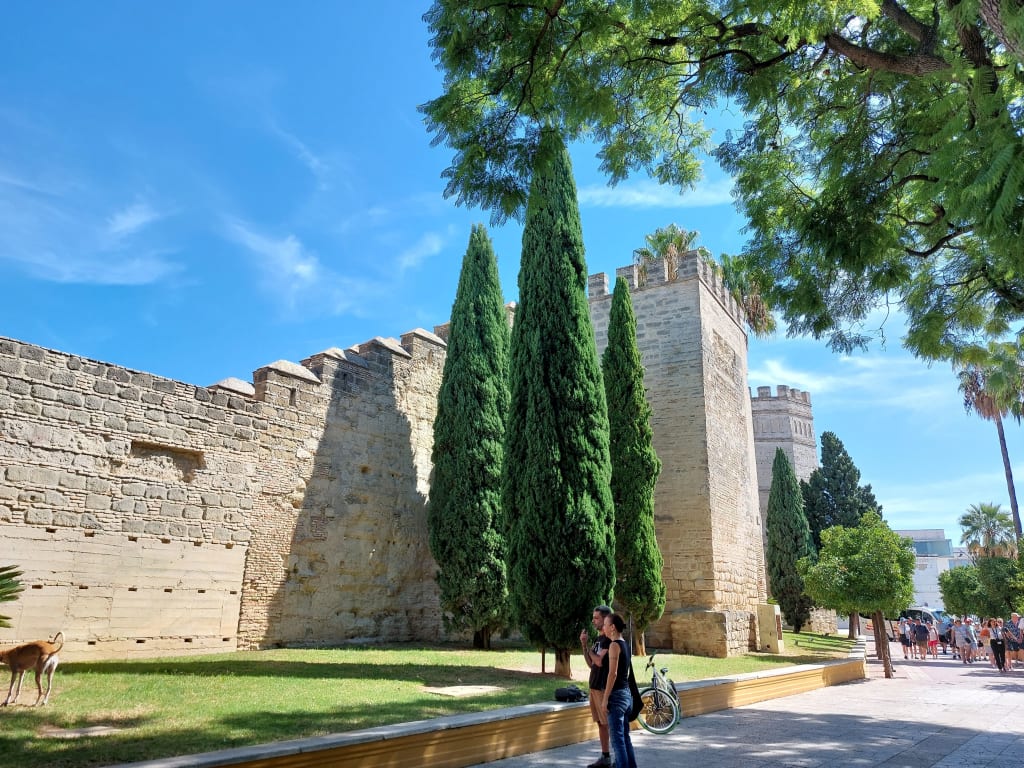
Last year in the springtime, I brought my mother to southern Spain for three weeks of living like natives—on a budget. We took an economical bus excursion to Jerez de la Frontera, where we saw dancing horses and sampled sherry.
But what caught my attention was the view from the Tío Pepe winery’s gift shop. The cathedral’s cupola and a city full of secrets loomed just out of reach.
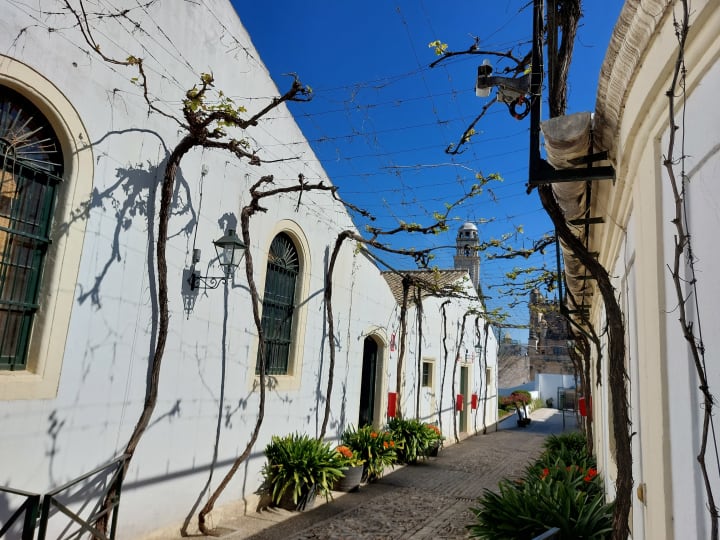
In October, I returned to Jerez by myself and stayed for three days. It’s a complex, vibrant city filled with stately homes, monasteries, museums, flamenco, and Andalusian cuisine—well worth an even longer stay.
Having already experienced sherry and horses, I was excited to understand the place where the city started: its Alcázar. The Spanish word alcázar adapts the Arabic word for “fortress.”
Though this space has been in constant use since prehistoric times, it enjoyed its peak of splendor during the Muslim dominance over this region.
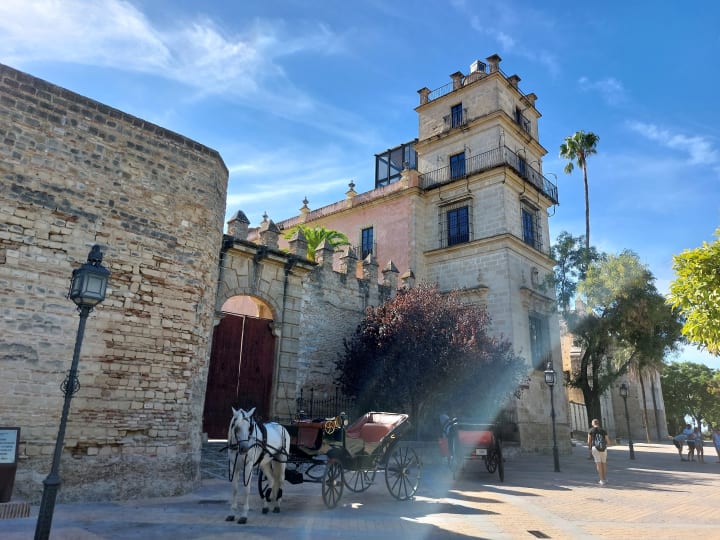
The oldest surviving elements were built in the eleventh century, and most of the architectural remains come from the twelfth, making Jerez’s Alcázar the most important monument from the Almohad dynasty in Spain.
Almohad caliphs demanded their fortresses fulfill all the functions of a city in miniature. Let’s see what they included.
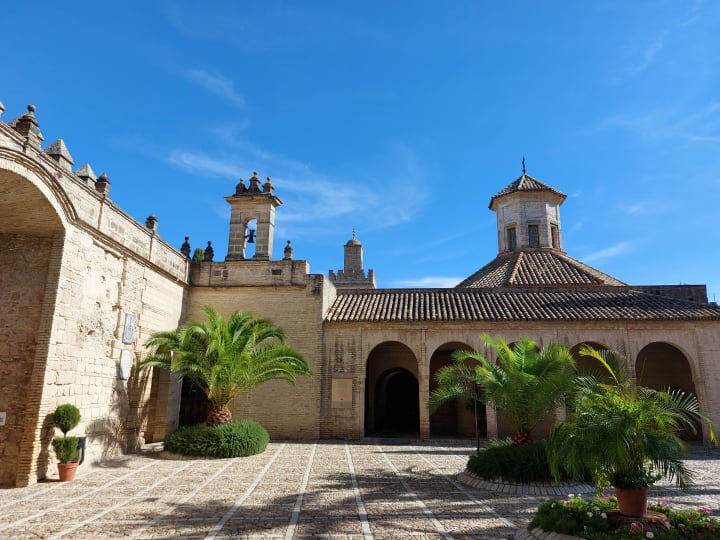
After buying your ticket, you cross what was the arms courtyard in the thirteenth century to arrive at the only mosque remaining in Jerez. It was one of eighteen during the city’s Almohad heyday and met the worship needs of the nobles and warriors living in different sections of the Alcázar.
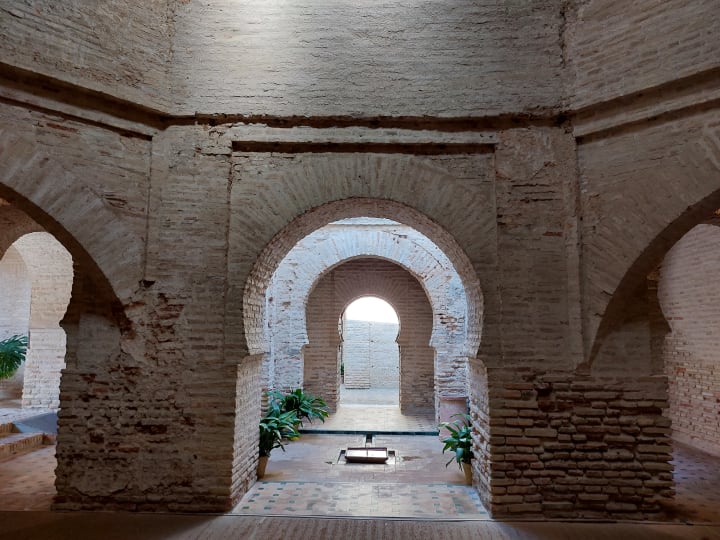
The mosque’s series of horseshoe arches become portals back in time. Passing through an open-air ablution courtyard, you find the worship space under a dome that makes the entire structure feel circular.
A small mihrab, which no longer has any adornments, directed prayers toward Mecca. The roundness makes it seem as if this mosque has come down from prehistoric times. If you’re lucky enough to stand in the center by yourself, you may hear the whispered echoes of centuries of prayers.
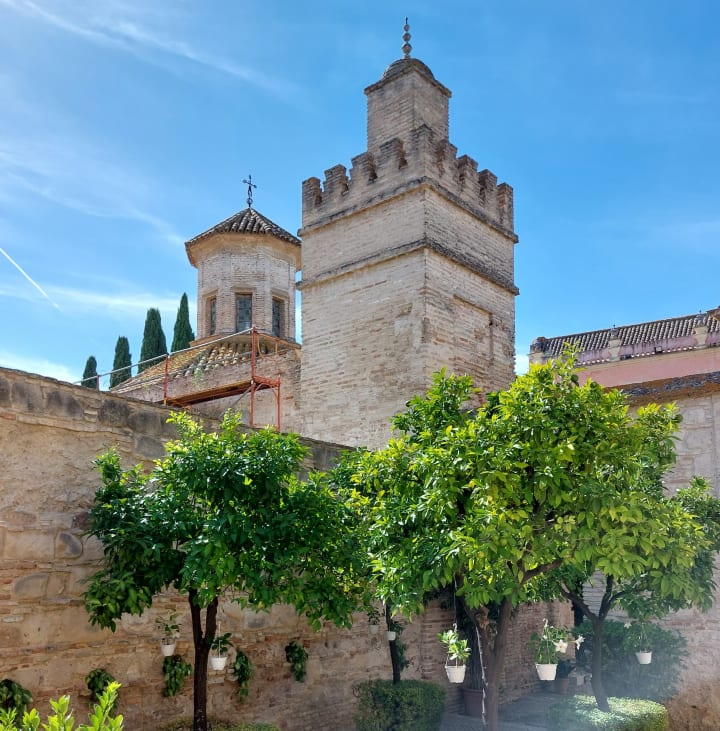
After Alfonso X of Castile conquered the Alcázar in 1261, the minaret became a bell tower and the mosque was dedicated to St. Mary as a church.
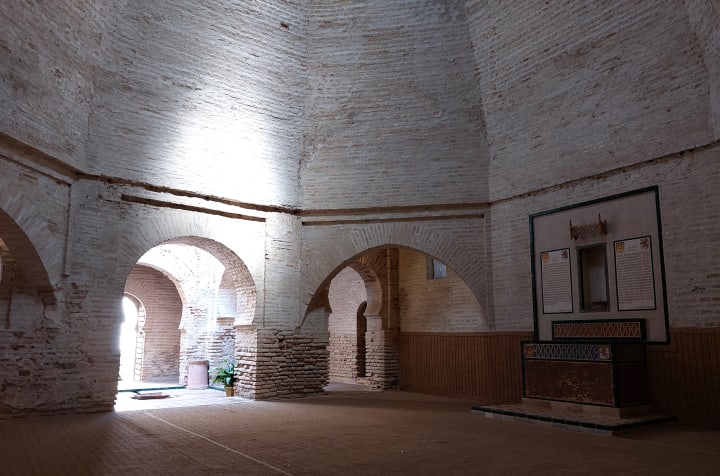
A twentieth-century altar on the wall to the left of the mihrab commemorates two of the miracles the Virgin Mary is said to have performed in Jerez in the thirteenth century.
King Alfonso collected these incidents into a songbook to consolidate Christian power via the arts and culture at his court.
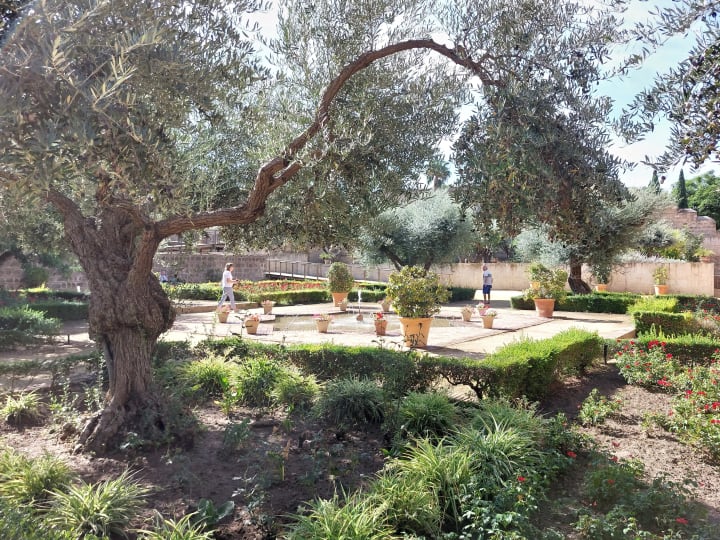
The spiritual journey continues as you leave the mosque. Though they’ve evolved over the centuries, the Alcázar gardens are now designed to reflect Almohad ideals of an earthly paradise.
Burbling fountains, shade trees, and bright, fragrant flowers make them a relaxing place to cool off on the hottest days.
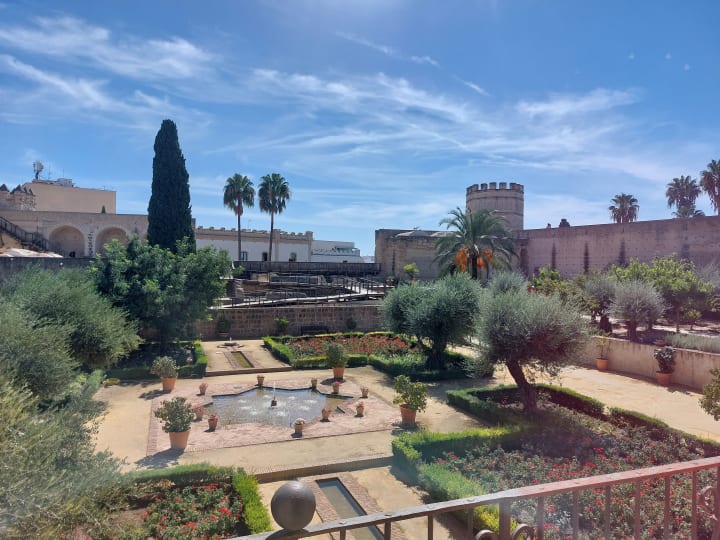
Along the Alcázar’s fortified walls, you explore a cistern, a waterwheel, an olive oil press, and Arab baths that were as luxurious as the previous Roman ones.
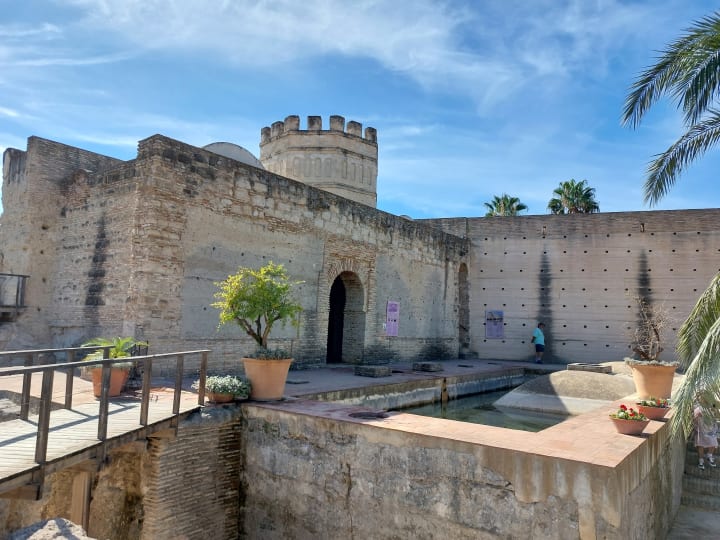
The Royal Pavilion, which had arches covered in arabesque plasterwork, was the caliphs’ private residence. The graceful arches remind us of the value of calm and privacy in Almohad culture.
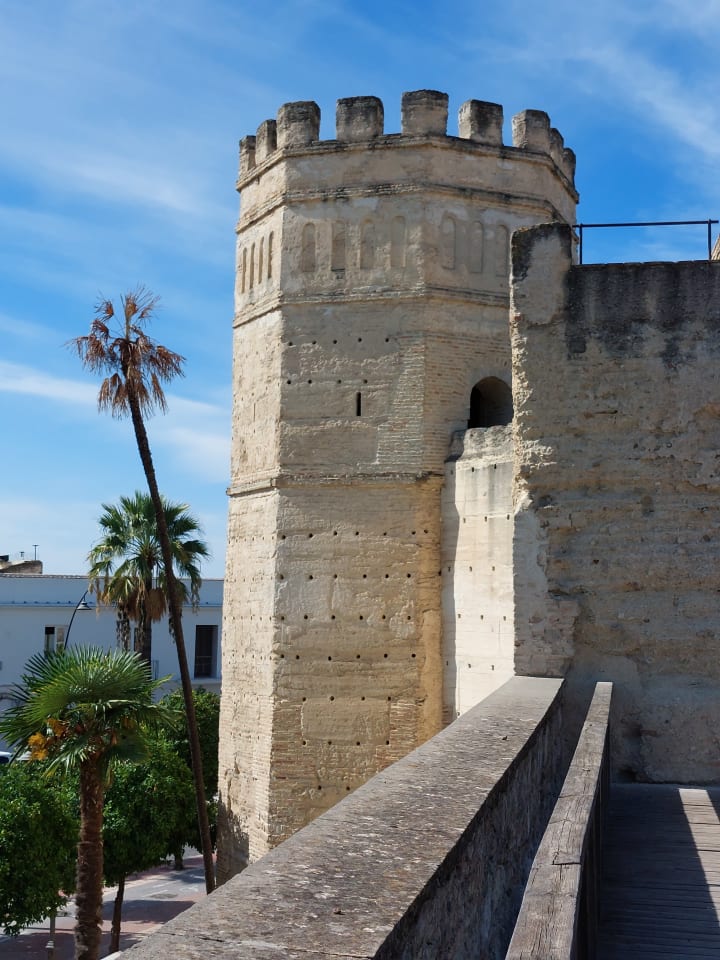
The Octagonal Tower rises up next to the Royal Pavilion as a statement of Almohad power visible from afar. Since it’s the fortress’s highest point, it offers panoramic views.
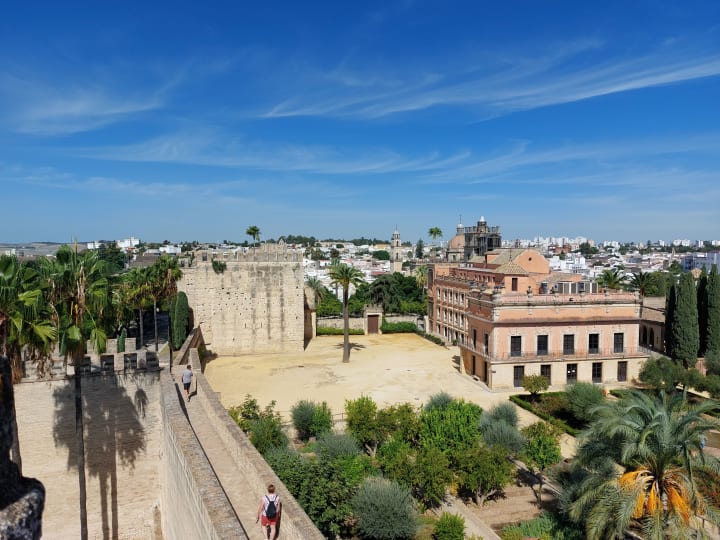
You can walk along the ramparts just like warriors and nobles of centuries past to arrive at the Homage Tower.

Marquise Rodrigo Ponce de León built this solid cube of a bulwark in 1471 during his conflicts against the Duke of Medina Sidonia. The Catholic Monarchs, Isabel and Fernando, put a stop to that nonsense, evicting Don Rodrigo in 1478.
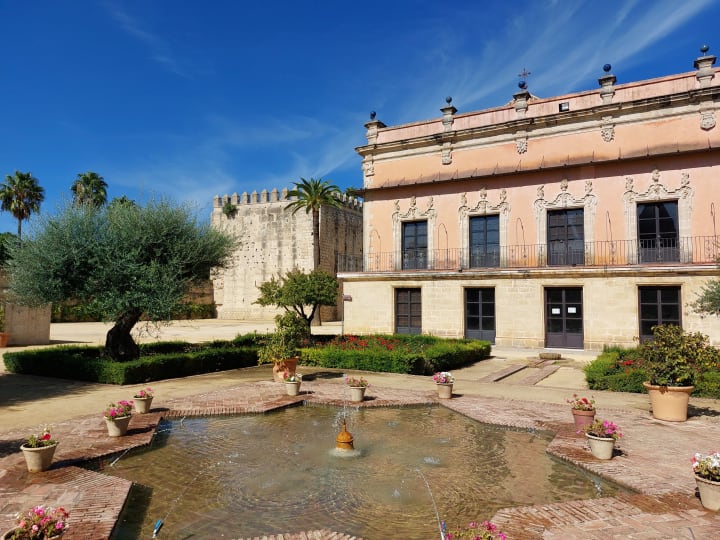
The salmon-pink building where you buy your ticket stands out from the rest of the bricks and stones. It was built in the second half of the seventeenth century on top of the Almohad gardens for the powerful Villavicencio family when they were appointed keepers of the fortress in perpetuity.
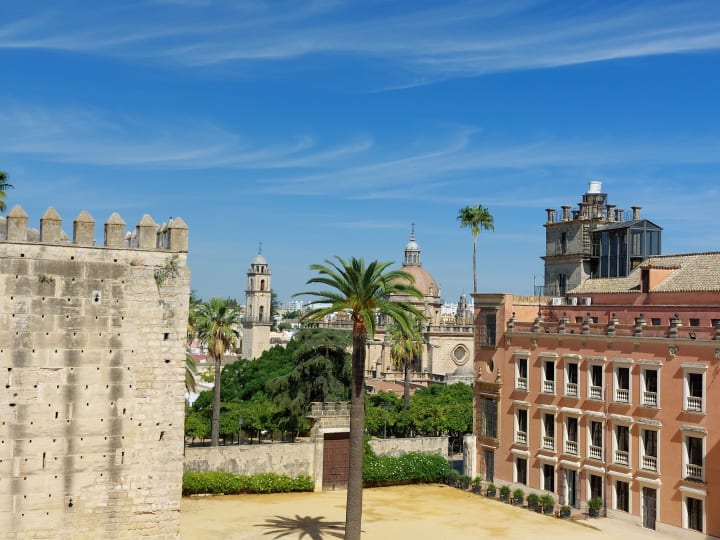
They wanted to live in the Alcázar with modern conveniences, and through the years, it was renovated to keep up with ever more sophisticated needs.
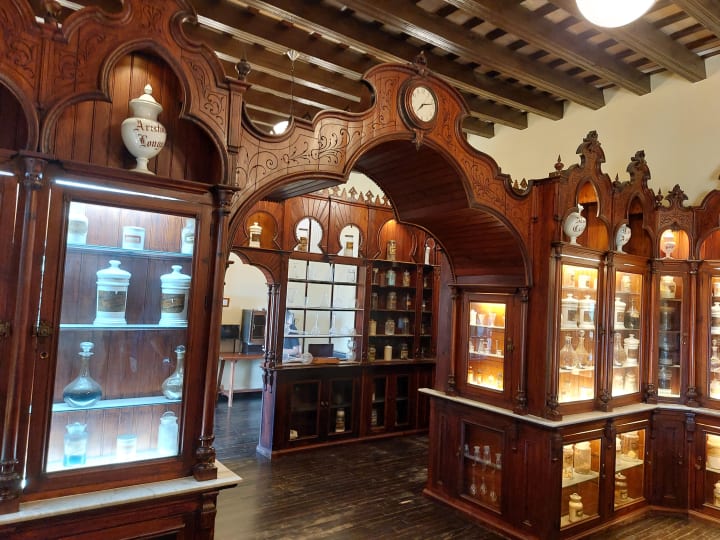
Today, you can see interesting twentieth-century artwork, an antique pharmacy, a camera obscura (entry is not included in a general ticket), and views of the Alcázar from the windows of Villavicencio Palace as an elegant finale to your stroll through the history of Jerez.
At this point, you probably feel like royalty without a drop of sherry in you!
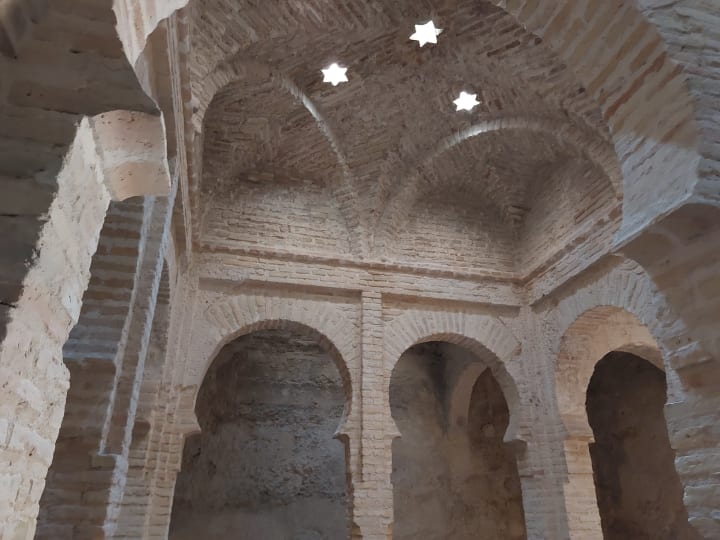
I explored the Alcázar on my own, but for royal treatment, opt for a guided tour.
The fortress is within strolling distance to many of Jerez’s other charms, so it’s a great start to your day. After all, it’s where the city began.
About the Creator
Jessica Knauss
I’m an author who writes great stories that must be told to immerse my readers in new worlds of wondrous possibility.
Here, I publish unusually entertaining fiction and fascinating nonfiction on a semi-regular basis.
JessicaKnauss.com


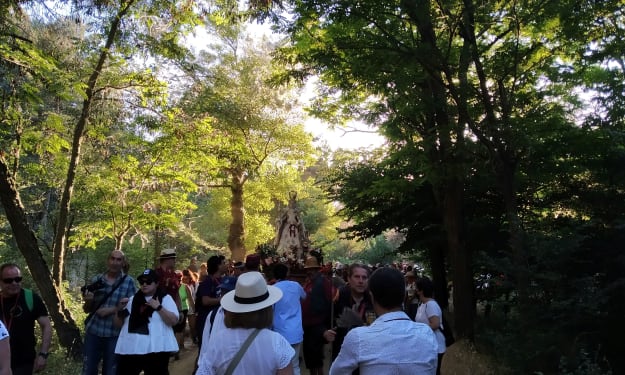



Comments
There are no comments for this story
Be the first to respond and start the conversation.